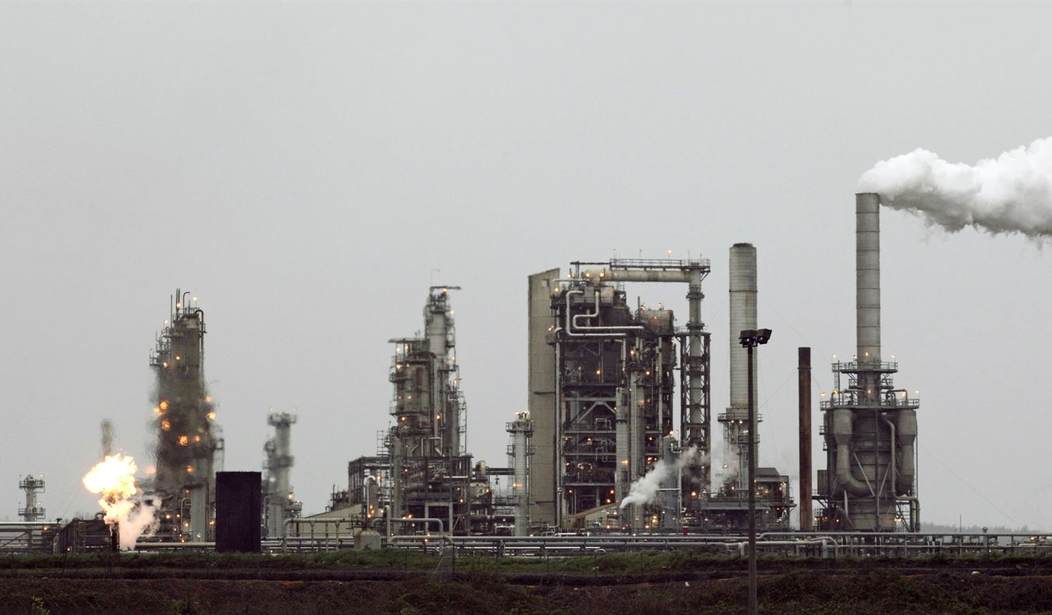President Joe Biden and his allies have continued to badger the American oil and gas industry to produce more gasoline in an effort to bring down prices ahead of the midterm elections. At the same time, they have been hurling accusations of “corporate greed” at major industry players and attempting to claim that the high prices are all the fault of the producers. As we’ve discussed here repeatedly, however, those allegations and characterizations of the industry are demonstrably false. What we’re dealing with is a lack of refinery capacity. The United States currently has the lowest number of functioning refineries capable of producing gasoline, diesel, and jet fuel that we’ve seen since 2016, largely as a result of government policies. Industry analyst S&P Global Commodity Insights reports this week that our existing refineries are running at or very near maximum capacity, and the odds of any of the shuttered refineries coming back online are slim to none.
Since June 2019, 1.482 MMb/d of refining capacity has been rationalized in the United States and Canada. Approximately 590,000 b/d was damaged in storms or refinery incidents and is not eligible for quick restart. Another 237,000 b/d was shut to convert to renewable diesel production. Approximately 375,000 b/d may be eligible for recommissioning but likely will remain shut. The cost of recommissioning could be significant, and the timing of the recommissioning is likely too late within the current window of opportunity.
General market sentiment, our medium-term outlook included, is that the current high-margin environment will be fleeting. Recouping recommissioning costs will be difficult unless these strong margins are sustained beyond 2023. Refiners are unlikely to invest hundreds of millions of dollars in recommissioning costs for only one or two years of strong returns.
As the linked analysis points out, as harsh as it may sound to say, it is not the job of the American oil and gas industry to lower gas prices and save Joe Biden’s political bacon. That’s not how the industry operates. The many companies involved in the liquid fuel production process from beginning to end exist for the purpose of turning a profit. Attempting to restart any of the shuttered refineries or build new ones at this point would not produce that result.
The industry still foresees demand for its liquid fuel products to significantly decline in the future. The government continues to demand more “green energy” alternatives and demonizes the fossil fuel industry. Government incentives are given to solar and wind energy farms along with conversion to electric vehicles. Meanwhile, more states look to impose various forms of “carbon taxes” on the conventional energy industry, driving up costs.
In response, a number of refineries have been converted to produce “biodiesel,” while others were simply shut down as they aged out. Reversing those conversions or restarting and certifying the closed refineries would be massively expensive. With demand expected to decline due to government mandates, investors would likely never make back the vast amounts of money it would cost to provide a short-term bandaid to the gas price situation.
In hindsight, the government should realize that they began forcing negative market conditions on the oil and gas industry and claiming that everyone would be moving to electric vehicles rapidly. But at present, less than 7% of the cars on the road are either fully electric or hybrids. (And the hybrids still use gasoline, just not as much of it.) When you reduce the supply of any given commodity or service while demand either increases or remains relatively stable, the price of that commodity rises. This is one of the most basic, fundamental facts in economics.
Analysts in the oil and gas industry saw this situation coming from a mile away and tried to warn everyone about it. It was as predictable as the rising of the sun in the east. But the federal government chose to not do anything about it. In fact, governmental leaders (under administrations of both parties) have arguably enacted policies that encouraged the current shortfalls. And that’s why gasoline costs as much as it does. There’s really no wizardry involved here.









Join the conversation as a VIP Member